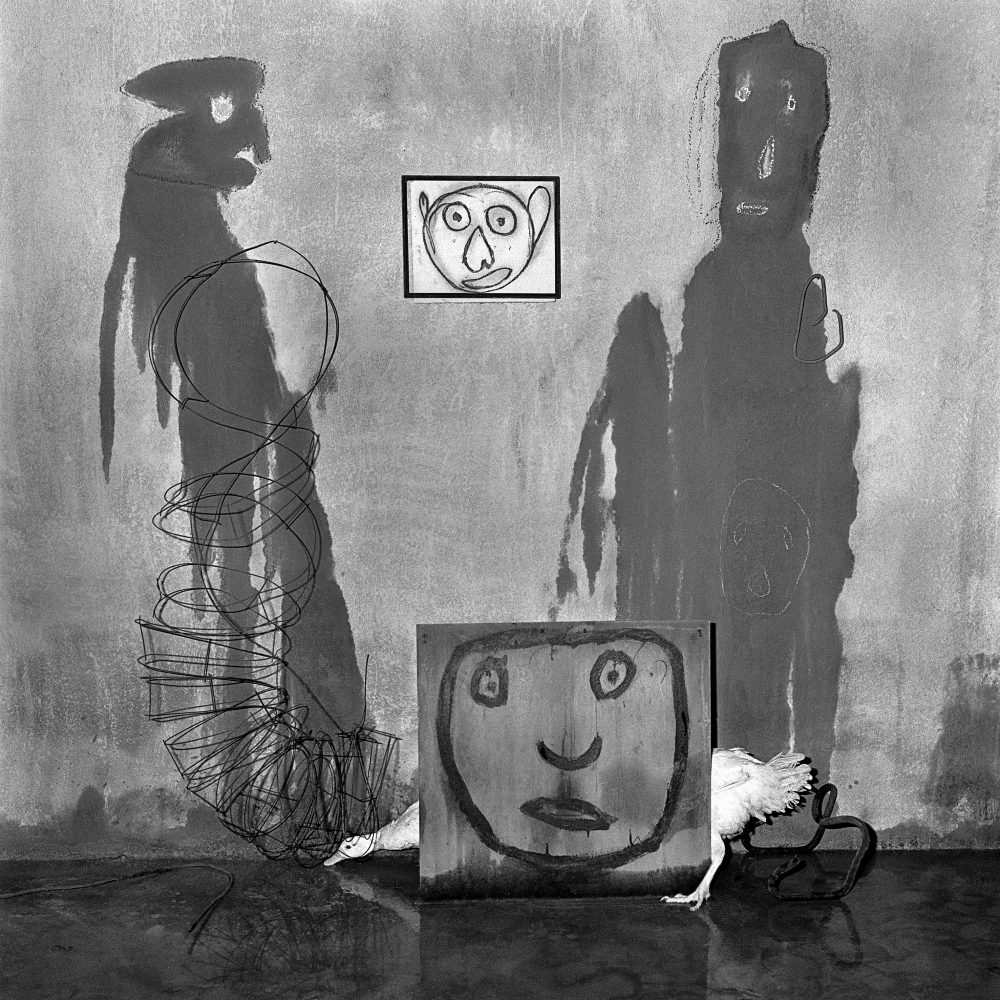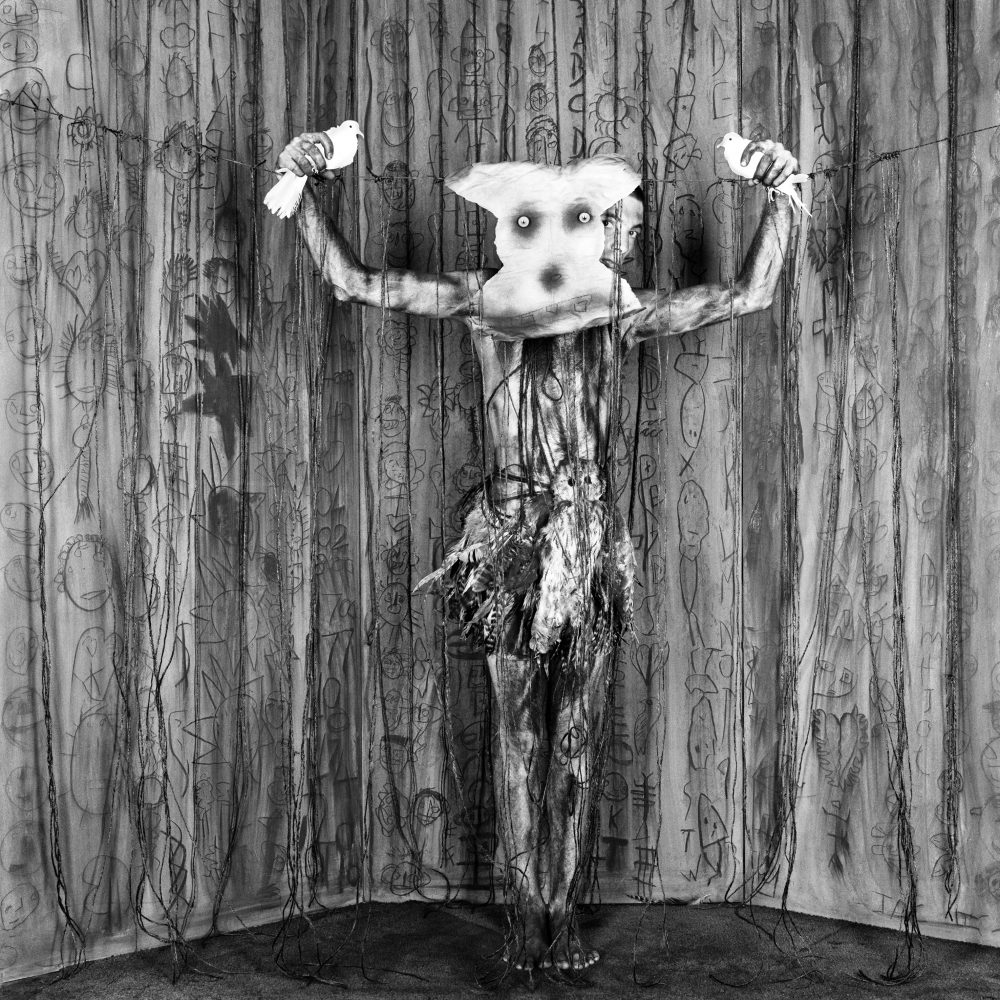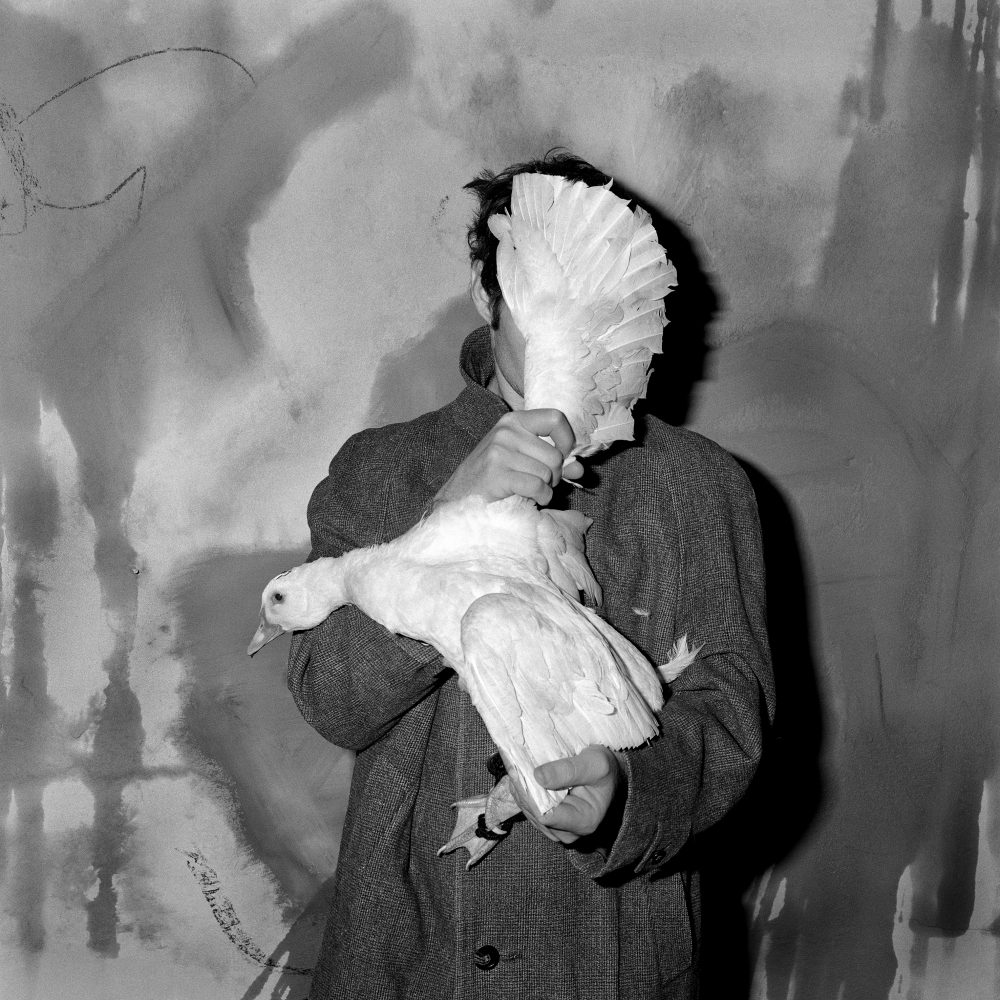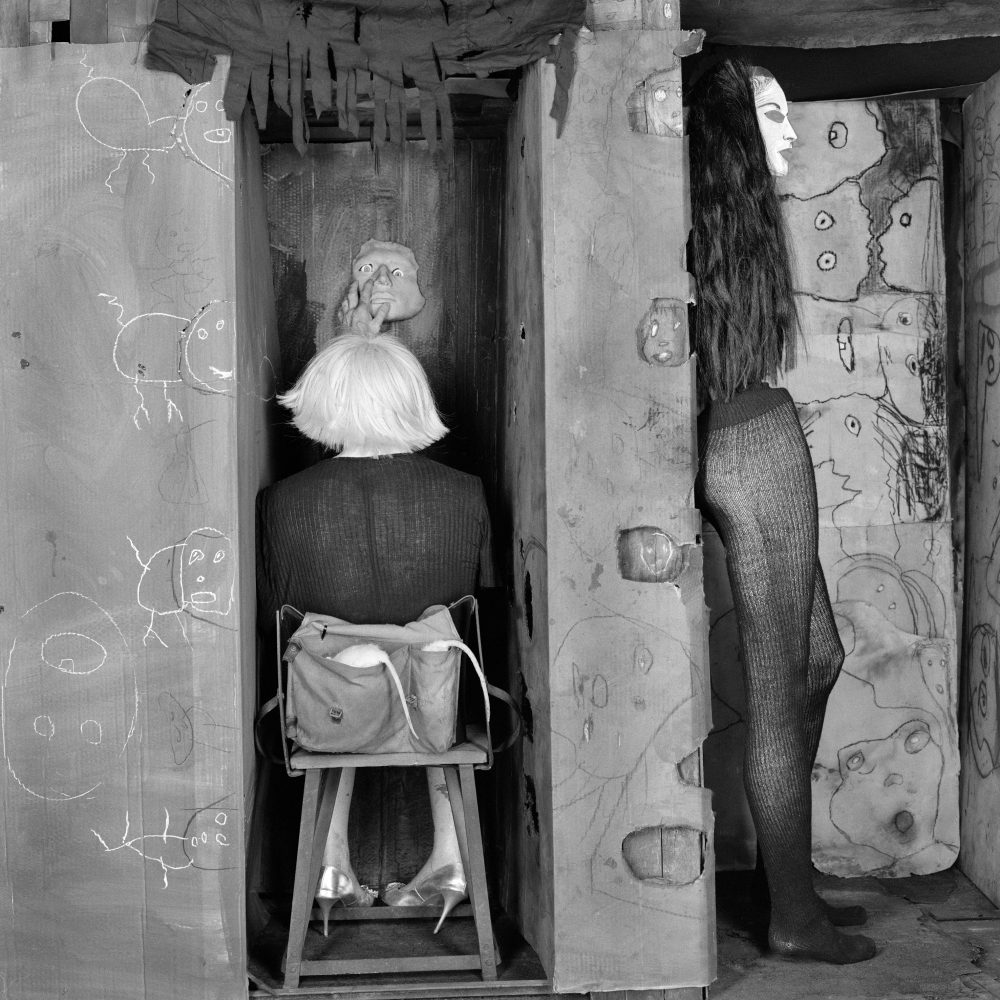by Daniela Mericio
_
Roger Ballen’s photographs are not easily described with words. They have not been taken to dialogue with our rational mind, they strike us in some hidden fold of our soul following indefinable paths, they bypass every logical connection and arrive directly to the subconscious. They evoke sensations, solicit an emotional response and most often look like a nightmare.
After all, the same author stated: “Photography has nothing to do with words. My job is to organize visual relationships. “And he warns slyly:” If my images make you uncomfortable, you should understand why. Maybe they touched something deep inside you. That is not my problem, but it could be your problem”.
Born in New York in 1950, Ballen moved to South Africa in 1982. He studied psychology and geology: disciplines that, digging layer by layer, investigate a space, being it mental or physical, through a deep descent.

His style has been called “dark”, a label that does not convince the author and rightly so, if dark is understood in the trite and banal meaning of the term. If, however, it means dark in the sense, not necessarily negative, of “obscure, mysterious, not yet known or re-known” the definition is fitting. His works trigger a spark, capture the viewers by revealing parts of themselves that are normally ignored, rejected and unconscious. Moreover, on closer inspection, a sense of funny, bizarre, almost playful, transpires alongside the restlessness. If on the one hand they are universal images, which show the human condition in its most distressing and less pleasant aspects, on the other they are the mirror of the individuality of their creator. They reveal the fascinating uniqueness of an original artist, whose research has evolved over the years by developing a language that combines painting, drawing, sculpture and photography.
Without forgetting videos and installations, which the author successfully cultivates as parallel expressive vehicles. I fink u freeky, a video made in 2012 for the South African band Die Antwoord was a huge hit on You Tube, collecting over 125 million views. A “mix of media” that, supporting and amplifying each other, have created an immediately recognizable aesthetic, a well-known style called Ballenesque (title of the extensive retrospective published by Thames & Hudson in 2017).

In the exhibition at the Sozzani Gallery The Body, the Mind, the Space, we find ourselves immersed in a universe on the border between reality and imagination, made of chaos and madness. An amoral, primitive, illogical world. Where photography meets art brut, the theatre of the absurd, surrealism. Time and space are suspended, thanks also to the exclusive use of black and white, used by Ballen, as well as analogue, throughout his career. Or almost, since he has been experimenting with digital and colour (but you will find no trace of it in Milan) for two years now. The route includes an anteroom, a site-specific installation, surrounded by walls covered in drawings. Once through this “boundary” the visitor access the photographic part, which is divided into three sections. The Body, The Mind, The Space: three key concepts that Ballen interprets in a totally unique way.
In the room dedicated to the body, or rather to the subjects, there are intense and enigmatic portraits of people living on the edge of society, the “poor whites” of South Africa. We meet faces with deformed and grotesque details, resigned and convoluted postures, with lost, absent, indecipherable expressions. Animals (cats, mice, birds, snakes) and objects (paintings, electric wires, dolls, furnishings) are also subjects, bodies, and their importance in the image is equal to that of individuals. If the first works (Platteland, 1994; Outland, 2001) focus on people in their environment, the human figure gradually disappears from the compositions in his subsequent works.

Only some part of the body (feet, legs, hands) find space in the photographs, faces are covered with masks, hidden by worn fabrics or boxes (Shadow Chamber, 2005). This is taken up to the point where the protagonists are others. Animals, living and unpredictable elements in an immobile space, constant presences in Ballen’s works, which claims to have “always tried to identify the animal in man and man in the animal”, so as not to forget that original connection from which contemporary society seems to have disconnected. And above all paintings, drawings similar to graffiti, to cave paintings, which invade the space covering entire walls, creating elaborate pictorial patterns (Boarding House, 2009; Asylum of the birds, 2014).
With the exception of his first documentary works, in Ballen’s works the space is closed, cramped, claustrophobic: the subjects are shot indoors, in degraded and squalid environments, with peeling walls, dangling electric wires, covered in spots, writings, drawings. Every detail (even a stain) has a meaning, it is not accidental or random: it is organic, essential in the balance of content and composition of the photographs, whose clarity of form, with every detail in focus, is impeccable.

Over the years the author began to establish relationships of cooperation with the people he portrayed, transforming them into involuntary actors, characters who recite themselves offering ideas to the photographer; he began to search for abandoned buildings to recreate a set, a stage in which to shoot not constructed photographs, but situations created starting from the juxtaposition of some elements, never completely predictable.
“In a sense, the images come from installations: I go to a place, find objects and materials, put them together and create a space to shoot. The idea of creating real artistic installations was born from the evolution of this process “They are spaces that assemble apparently unrelated elements, where everything is possible, because they are physical representations of an interior space, which does not follow the laws of reality.

This aspect is even more evident when entering the section of the exhibition dedicated to the mind, where the visitor gets surrounded by hallucinations-like images. They belong to the work The theatre of apparitions (2016), inspired by glass engravings on the dark windows of a women’s prison. Ballen has experimented with the process and produced unparalleled results, thanks to the wise use of light and photographic technique: those we are dealing with are spirits, figures similar to fossils, ghosts with evanescent contours floating in the dark.
These are representations born in the most remote recesses of the psyche, where dreams and creative processes originate. As the photographer states, these images are “psychological by nature, born within my deepest imagination. It is a difficult place to reach, it took me a long time not only to get there, but also to define it visually. ”
ROGER BALLEN | THE BODY, THE MIND, THE SPACE
Sozzani Foundation
Corso Como 10, Milan
9 June – 8 September 2019
Every day: 10.30 am – 7.30 pm
Wed and Thu: 10.30am – 9.00pm
July 30, 2019




